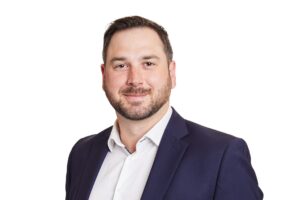SCHOOL IS BACK – AND SO ARE THE COSTS
It’s that time of year again – the kids are going back to school. If your kids are old enough, a return to class could be an emotional experience, but also a significant financial burden. The costs of post-secondary education are high and rising at a rate that consistently out-paces inflation. One program designed to help Canadians with costs associated with college and university is the Registered Education Savings Plan (“RESP”).
Why an RESP?
There are three main benefits to using an RESP to fund education: 1) government grants, 2) tax-free growth, and 3) little to no tax on withdrawals.
Government Grants
The bread and butter of the RESP is the Canada Education Savings Grant (“CESG”), where the federal government provides a 20% grant on RESP deposits (QC and BC have provincial grants over and above the CESG). There’s an annual CESG limit of $500 and a lifetime limit of $7,200 per child. You read that correct, $7,200 per child in gifted funds to assist with post-secondary. A contribution of $2,500 annually will yield the $500 maximum annual CESG and after 14.5 years, you’ll have received the lifetime maximum. Missed opening an RESP immediately upon the birth of your child? No problem, every year you can recoup one year of missed CESG.
For example, pretend your child just turned 4 years old, and you open their first RESP. The first 4 years of potential RESP contributions (years 0, 1, 2, and 3) were missed, resulting in $2,000 ($500 x 4) of accumulated eligible CESG. To catch up, your annual contributions should be:
| Child Age | RESP contribution | CESG received | Unused CESG |
| 3 | 0 | 0 | $2,000 |
| 4 | $5,000 | $1,000 | $1,500 |
| 5 | $5,000 | $1,000 | $1,000 |
| 6 | $5,000 | $1,000 | $500 |
| 7 | $5,000 | $1,000 | $0 |
| 8 | $2,500 | $500 | $0 |
When the child turns 8 years old, you’ll be caught back up and can reduce your yearly contributions back to $2,500.
Tax-free growth
The investment within the RESP, which is a mix of contributions and government grants, grows tax-free. The compounding effects over time can be extreme. Compare an initial investment of $2,500 with 5% annual return, one made within an RESP and one made in a personal non-registered account taxed at 30%.
| RESP | ||||
| Year | Start | Growth | Tax | End |
| 1 | $3,000* | $150 | $0 | $3,150 |
| 2 | $3,150 | $158 | $0 | $3,308 |
| 3 | $3,308 | $165 | $0 | $3,473 |
| 16 | $6,237 | $312 | $0 | $6,549 |
| 17 | $6,549 | $327 | $0 | $6,876 |
| 18 | $6,876 | $344 | $0 | $7,220 |
| Non-Registered | ||||
| Year | Start | Growth | Tax | End |
| 1 | $2,500 | $125 | $38 | $2,588 |
| 2 | $2,588 | $129 | $39 | $2,678 |
| 3 | $2,678 | $134 | $40 | $2,772 |
| 16 | $4,188 | $209 | $63 | $4,335 |
| 17 | $4,335 | $217 | $65 | $4,487 |
| 18 | $4,487 | $224 | $67 | $4,644 |
*starting investment within RESP is $3,000 due to the $500 CESG being added to the $2,500 initial investment.
Over 18 years, $7,220 in the RESP vs $4,644 in the non-registered account – a 55% improvement in financial position.
Little to no tax on withdrawals
Withdrawals from RESPs can take one of two forms: Post-Secondary Education Payments (PSEs) and Educational Assistance Payments (EAPs).
PSEs are withdrawals of contributions and are not taxable, there is no limit to PSE withdrawals. EAPs are withdrawals of non-contributions: government grants and investment growth. EAPs are taxable in the hands of the student (T4A income). The student generally has little to no other income, and therefore very little tax is paid on EAP withdrawals. There is a limit of $5,000 on EAP withdrawals in the first 13 weeks of admission to the post-secondary institution, but no limit thereafter. Withdrawals must be facilitated by the RESP subscriber (person who setup the RESP and made contributions) and proof of enrollment will be necessary to access the funds.
What happens if my child doesn’t go to school?
The advantages of the RESP largely disappear if the beneficiary (person for who’s benefit the RESP was established) decides to not pursue post-secondary education. In this scenario, best to be patient and not dissolve the RESP immediately – your child may change their mind and funds in an RESP can remain there for up to 36 years. If it’s becoming clear that continuing education is not part of the plan, you have a few options
- Transfer the RESP value to a sibling (must be under 21 years old)
- Transfer the RESP into an RRSP of the subscriber
- Must have the RRSP contribution room
- RESP must have been active for over 10 years
- CESG amounts must be returned
- Withdraw the funds
- CESG amounts must be returned
- Taxes to be paid on the investment growth (at your marginal rate) plus an additional 20% penalty
The RESP is an exceptional vehicle to help fund continuing education, the benefits of which become more pronounced the earlier you start. Even with an early start and disciplined contributions, an RESP alone is often insufficient to completely fund post-secondary education. Your Welch LLP advisor can support you in creating an education-funding strategy as part of a broader financial plan to ensure you and your family are setup for success.













